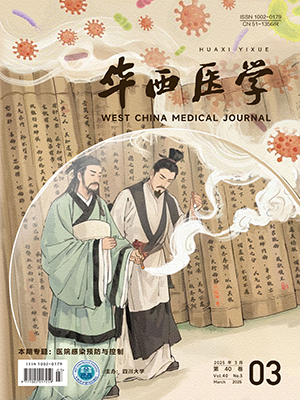Interdisciplinary talent development holds significant importance for both the nation and its people and is a necessary requirement for the construction of new medical sciences. The authors and their team, responding to the needs of the times, have explored interdisciplinary talent cultivation in intelligent science and technology at a prestigious medical university. Their efforts include developing pathways, creating courses, authoring textbooks, building faculty teams, identifying challenges, and innovating management. The results demonstrate that interdisciplinary training in medical and artificial intelligence represents an innovative attempt in talent development, and it requires constant reflection and refinement through exploration. This paper summarizes the efforts in interdisciplinary talent cultivation in intelligent science and technology, aiming to contribute insights, share lessons, and promote progress in interdisciplinary talent development.
Citation:
YANG Xiaoyan, SU Zehao, SUN Yajing. Empowering medicine with artificial intelligence: exploring interdisciplinary talent development in intelligent science and technology. West China Medical Journal, 2024, 39(12): 1943-1947. doi: 10.7507/1002-0179.202411108
Copy
Copyright © the editorial department of West China Medical Journal of West China Medical Publisher. All rights reserved
| 1. |
吴飞. 回望人工智能原点: 达特茅斯会议. 科学, 2023, 75(4): 49-52, 4.
|
| 2. |
张军. 绿色教育: 新时代中国高等教育变革与转型. 中国高教研究, 2024(10): 1-10, 35.
|
| 3. |
国务院. 国务院关于印发新一代人工智能发展规划的通知(国发〔2017〕35 号). 中华人民共和国国务院公报, 2017(22): 7-21.
|
| 4. |
新华社. 习近平在清华大学考察时强调 坚持中国特色世界一流大学建设目标方向 为服务国家富强民族复兴人民幸福贡献力量. 思想政治工作研究, 2021(5): 14-16.
|
| 5. |
苏泽灏, 杨晓妍. 新医科背景下 ChatGPT 对“医学+”学科交叉人才培养的启示. 医学论坛, 2023, 6(7): 9-12.
|
| 6. |
张琪. 人工智能的发展及其在医学领域中的应用. 电子技术与软件工程, 2016(20): 259.
|
| 7. |
袁天蔚, 薛淮, 杨靖, 等. 从战略规划与科技布局看国内外人工智能医学应用的发展现状. 生命科学, 2022, 34(8): 974-982.
|
| 8. |
Doğan G, Al U. Is it possible to rank universities using fewer indicators? A study on five international university rankings. ASLIB J Inf Manag, 2019, 71(1): 18-37.
|
| 9. |
宋元明. “人工智能+医学”新医科人才培养探索——以部分高校实践为例. 中国高校科技, 2020(8): 65-68.
|
| 10. |
立影. 大力发展交叉学科 健全新时代高等教育学科专业体系. 网信军民融合, 2021(2): 19.
|
| 11. |
《研究生教育学科专业目录(2022 年)》公布. 学位与研究生教育, 2022 (10): 18.
|
| 12. |
陈俊任, 曾瑜, 张超, 等. 人工智能医学应用的文献传播的可视化研究. 中国循证医学杂志, 2021, 21(8): 973-979.
|
| 13. |
张谦. 四川大学碳中和未来技术学院、智能科学与技术学院正式成立. 西部皮革, 2022, 44(7): 9, 12.
|
| 14. |
新华社. 中共中央国务院关于弘扬教育家精神加强新时代高素质专业化教师队伍建设的意见. 中华人民共和国国务院公报, 2024(25): 9-12.
|
| 15. |
黄贤金. 探索强化科技教育与人文教育协同的图书馆“四全文化育人”新机制. 大学图书馆学报, 2024, 42(5): 5-11.
|
| 16. |
李志强, 王雪峰, 曹凤, 等. 生成式人工智能在中医药学教育中的应用与挑战. 医学新知, 2024, 34(10): 1191-1198.
|
- 1. 吴飞. 回望人工智能原点: 达特茅斯会议. 科学, 2023, 75(4): 49-52, 4.
- 2. 张军. 绿色教育: 新时代中国高等教育变革与转型. 中国高教研究, 2024(10): 1-10, 35.
- 3. 国务院. 国务院关于印发新一代人工智能发展规划的通知(国发〔2017〕35 号). 中华人民共和国国务院公报, 2017(22): 7-21.
- 4. 新华社. 习近平在清华大学考察时强调 坚持中国特色世界一流大学建设目标方向 为服务国家富强民族复兴人民幸福贡献力量. 思想政治工作研究, 2021(5): 14-16.
- 5. 苏泽灏, 杨晓妍. 新医科背景下 ChatGPT 对“医学+”学科交叉人才培养的启示. 医学论坛, 2023, 6(7): 9-12.
- 6. 张琪. 人工智能的发展及其在医学领域中的应用. 电子技术与软件工程, 2016(20): 259.
- 7. 袁天蔚, 薛淮, 杨靖, 等. 从战略规划与科技布局看国内外人工智能医学应用的发展现状. 生命科学, 2022, 34(8): 974-982.
- 8. Doğan G, Al U. Is it possible to rank universities using fewer indicators? A study on five international university rankings. ASLIB J Inf Manag, 2019, 71(1): 18-37.
- 9. 宋元明. “人工智能+医学”新医科人才培养探索——以部分高校实践为例. 中国高校科技, 2020(8): 65-68.
- 10. 立影. 大力发展交叉学科 健全新时代高等教育学科专业体系. 网信军民融合, 2021(2): 19.
- 11. 《研究生教育学科专业目录(2022 年)》公布. 学位与研究生教育, 2022 (10): 18.
- 12. 陈俊任, 曾瑜, 张超, 等. 人工智能医学应用的文献传播的可视化研究. 中国循证医学杂志, 2021, 21(8): 973-979.
- 13. 张谦. 四川大学碳中和未来技术学院、智能科学与技术学院正式成立. 西部皮革, 2022, 44(7): 9, 12.
- 14. 新华社. 中共中央国务院关于弘扬教育家精神加强新时代高素质专业化教师队伍建设的意见. 中华人民共和国国务院公报, 2024(25): 9-12.
- 15. 黄贤金. 探索强化科技教育与人文教育协同的图书馆“四全文化育人”新机制. 大学图书馆学报, 2024, 42(5): 5-11.
- 16. 李志强, 王雪峰, 曹凤, 等. 生成式人工智能在中医药学教育中的应用与挑战. 医学新知, 2024, 34(10): 1191-1198.




